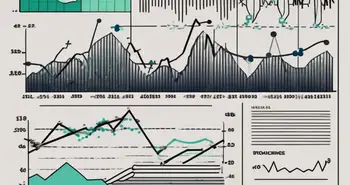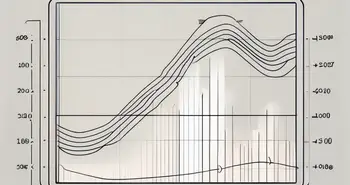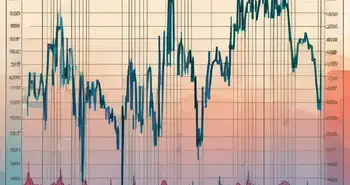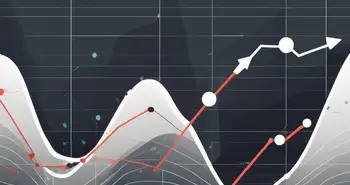An Introduction to Absolute Price Oscillator
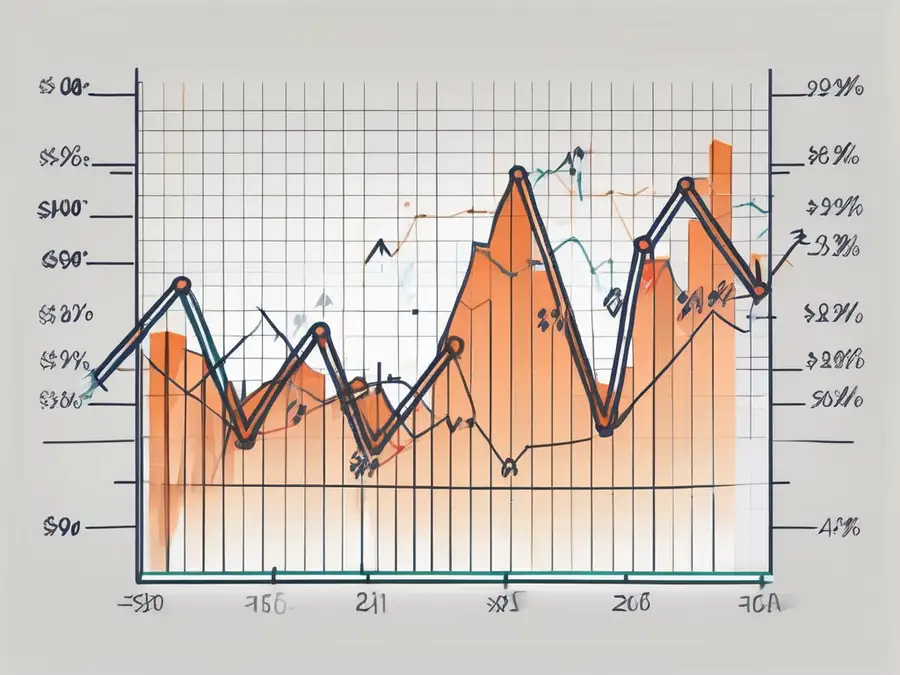
As an expert in trading and technical analysis, I am excited to bring you the ultimate guide to the Absolute Price Oscillator (APO). If you're looking to take your trading to the next level, understanding and utilizing the APO is a must. In this comprehensive guide, we will dive deep into the basics, components, calculation, interpretation of signals, and trading strategies using the APO. By the end of this article, you will have the knowledge and tools to confidently leverage this powerful indicator in your trading arsenal.
Understanding the Basics of Absolute Price Oscillator
The Absolute Price Oscillator, also known as APO, is a technical indicator that measures the difference between two moving averages of an asset's price. By calculating this difference, the APO provides insights into the momentum and trend strength of the asset. Traders use the APO to identify potential buy or sell signals, overbought or oversold conditions, and bullish or bearish divergences.
When delving into the intricacies of the Absolute Price Oscillator, it's essential to understand how the fast period moving average and the slow period moving average interact to create actionable trading signals. The fast period moving average reacts more quickly to price changes, reflecting short-term fluctuations, while the slow period moving average smooths out these fluctuations to capture the long-term trend. This dynamic interplay between the two moving averages forms the basis of the APO's analytical power.
Definition and Function of Absolute Price Oscillator
The Absolute Price Oscillator is a versatile indicator that helps traders identify the direction of the trend and gauge its momentum. It consists of two main components: a fast period moving average and a slow period moving average. By comparing these moving averages, the APO generates a line graph that oscillates around a zero line, providing visual cues for potential trading opportunities.
Furthermore, the Absolute Price Oscillator can be customized by adjusting the lengths of the moving averages to suit different trading styles and timeframes. Shorter moving average periods result in more sensitive signals that respond quickly to price changes, ideal for short-term traders. On the other hand, longer moving average periods provide smoother signals, catering to traders with a medium to long-term investment horizon.
Importance of Absolute Price Oscillator in Trading
The APO is highly valued by traders due to its ability to filter out market noise, reveal underlying trends, and generate precise buy or sell signals. Whether you are a trend-following trader or a contrarian investor, the APO can provide valuable insights into the market conditions, helping you make informed trading decisions.
Moreover, the Absolute Price Oscillator can be combined with other technical indicators or chart patterns to enhance its effectiveness. Traders often use the APO in conjunction with tools like the Relative Strength Index (RSI) or Moving Average Convergence Divergence (MACD) to validate signals and increase the probability of successful trades. This multi-faceted approach to technical analysis empowers traders with a comprehensive view of the market dynamics, enabling them to navigate complex trading environments with confidence.
Components of Absolute Price Oscillator
The APO consists of four key components that form the foundation of its calculation and interpretation. Understanding these components is crucial to effectively use the APO in your trading strategy.
Fast Period and Slow Period
The fast period and slow period are two moving averages used in the APO calculation. The fast period represents a shorter timeframe, capturing more recent price fluctuations, while the slow period spans a longer timeframe, smoothing out the price data. The choice of these periods depends on your trading style and the asset you are analyzing.
Oscillator Line and Zero Line
The APO generates an oscillator line that fluctuates above and below a zero line. When the oscillator line moves above the zero line, it indicates bullish momentum, suggesting a potential buying opportunity. Conversely, when the oscillator line falls below the zero line, it signals bearish momentum, highlighting the possibility of a selling opportunity.
How to Calculate Absolute Price Oscillator
Calculating the APO requires a step-by-step process that involves obtaining the fast period moving average, the slow period moving average, and subtracting the two. Let's take a closer look at this calculation process.
Step-by-Step Calculation Process
1. Determine the fast period and slow period you wish to use.2. Calculate the fast period moving average by summing the closing prices over the fast period and dividing it by the fast period length.3. Calculate the slow period moving average using the same method as the fast period moving average.4. Subtract the slow period moving average from the fast period moving average to obtain the APO.
Understanding the Calculation Results
The APO is represented by a line graph that oscillates above and below the zero line. Positive APO values indicate bullish momentum, while negative values suggest bearish momentum. The magnitude of the APO values provides insights into the strength of the trend. Larger positive values indicate stronger bullish momentum, while larger negative values signify stronger bearish momentum.
Interpreting Absolute Price Oscillator Signals
Interpreting the signals generated by the APO is crucial for making informed trading decisions. Let's explore two key signal interpretations: identifying overbought and oversold conditions, and recognizing bullish and bearish divergences.
Identifying Overbought and Oversold Conditions
When the APO reaches extreme positive values and starts to decline, it indicates that the asset may be overbought. Conversely, when the APO drops to extreme negative values and begins to rise, it suggests that the asset may be oversold. Identifying these conditions can help you anticipate potential reversals or corrective moves in the market.
Recognizing Bullish and Bearish Divergences
Bullish and bearish divergences occur when the price of an asset and the APO move in opposite directions. A bullish divergence is observed when the price makes lower lows while the APO makes higher lows. This suggests that the selling pressure is weakening, and a bullish reversal may be imminent. Conversely, a bearish divergence is identified when the price creates higher highs while the APO forms lower highs. This indicates waning buying pressure and a potential bearish reversal.
Strategies for Trading with Absolute Price Oscillator
Now that you understand the basics of the APO and how to interpret its signals, let's explore some strategies for incorporating the APO into your trading approach.
Combining Absolute Price Oscillator with Other Indicators
The APO works well when combined with other indicators to confirm signals and increase the probability of successful trades. Consider using trend-following indicators like moving averages or momentum oscillators such as the Relative Strength Index (RSI) to validate APO signals before entering trades.
Tips for Minimizing Risks and Maximizing Profits
1. Always practice proper risk management by setting stop-loss orders to limit potential losses.2. Avoid relying solely on the APO for making trading decisions. Use it as a part of a comprehensive trading strategy.3. Continuously monitor the APO to adapt to changing market conditions and avoid outdated signals.4. Consider backtesting the APO strategy on historical data to evaluate its effectiveness and refine the approach.
Remember, successful trading requires a combination of technical analysis skills, risk management, and experience. Take the time to understand the nuances of the APO and experiment with different strategies to find what works best for your trading style and preferences.
FAQ
What is the Absolute Price Oscillator?
The Absolute Price Oscillator (APO) is a technical indicator that measures the difference between two moving averages of an asset's price. It provides insights into the momentum and trend strength of the asset.
How is the APO calculated?
The APO is calculated by subtracting the slow period moving average from the fast period moving average. This difference is represented by a line graph that oscillates around a zero line.
What are the key signals to watch for when interpreting the APO?
Two key signals to watch for when interpreting the APO are overbought and oversold conditions, and bullish and bearish divergences. Overbought conditions suggest a potential selling opportunity, while oversold conditions signal a possible buying opportunity. Bullish divergences indicate a potential bullish reversal, while bearish divergences suggest a potential bearish reversal.
How can I incorporate the APO in my trading strategy?
You can incorporate the APO into your trading strategy by combining it with other indicators for confirmation. Additionally, practice proper risk management, continuously monitor the APO for changing signals, and consider backtesting your strategy on historical data.
I hope this comprehensive guide has provided you with a solid understanding of the Absolute Price Oscillator. Remember, knowledge combined with practical application is the key to becoming a successful trader. Happy trading!
Ready to put your newfound knowledge of the Absolute Price Oscillator into practice? Join Morpher, the revolutionary trading platform that's changing the game with blockchain technology. With Morpher, you can trade a vast array of assets, from stocks and cryptocurrencies to unique markets like NFTs, all with zero fees and infinite liquidity. Start with as little as $1, enjoy the benefits of fractional investing, and take advantage of up to 10x leverage to boost your trading power. Experience the safety of the Morpher Wallet and the innovation of trading Virtual Futures. Sign Up and Get Your Free Sign Up Bonus today, and elevate your trading experience with Morpher.

Disclaimer: All investments involve risk, and the past performance of a security, industry, sector, market, financial product, trading strategy, or individual’s trading does not guarantee future results or returns. Investors are fully responsible for any investment decisions they make. Such decisions should be based solely on an evaluation of their financial circumstances, investment objectives, risk tolerance, and liquidity needs. This post does not constitute investment advice.

Painless trading for everyone
Hundreds of markets all in one place - Apple, Bitcoin, Gold, Watches, NFTs, Sneakers and so much more.

Painless trading for everyone
Hundreds of markets all in one place - Apple, Bitcoin, Gold, Watches, NFTs, Sneakers and so much more.



